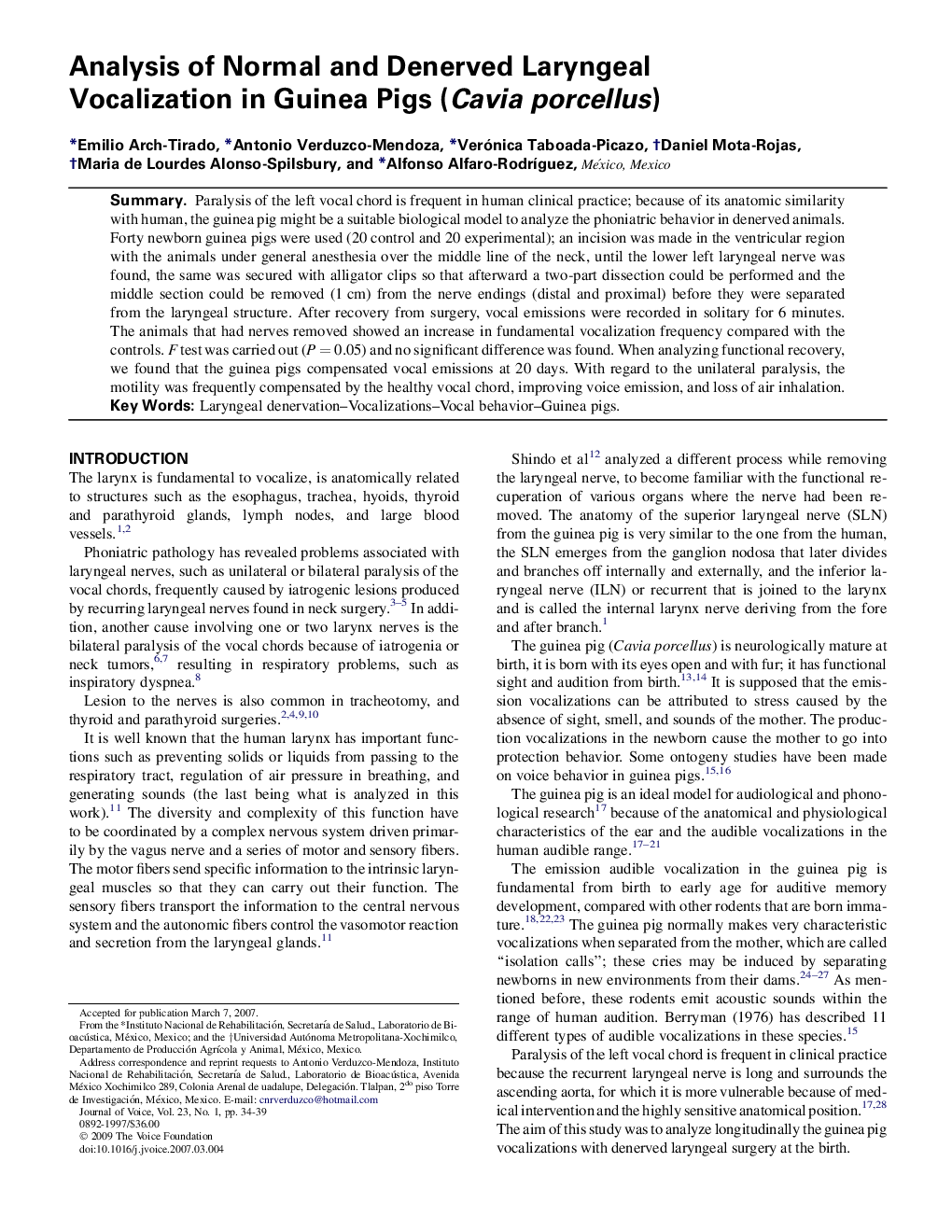| Article ID | Journal | Published Year | Pages | File Type |
|---|---|---|---|---|
| 1102838 | Journal of Voice | 2009 | 6 Pages |
SummaryParalysis of the left vocal chord is frequent in human clinical practice; because of its anatomic similarity with human, the guinea pig might be a suitable biological model to analyze the phoniatric behavior in denerved animals. Forty newborn guinea pigs were used (20 control and 20 experimental); an incision was made in the ventricular region with the animals under general anesthesia over the middle line of the neck, until the lower left laryngeal nerve was found, the same was secured with alligator clips so that afterward a two-part dissection could be performed and the middle section could be removed (1 cm) from the nerve endings (distal and proximal) before they were separated from the laryngeal structure. After recovery from surgery, vocal emissions were recorded in solitary for 6 minutes. The animals that had nerves removed showed an increase in fundamental vocalization frequency compared with the controls. F test was carried out (P = 0.05) and no significant difference was found. When analyzing functional recovery, we found that the guinea pigs compensated vocal emissions at 20 days. With regard to the unilateral paralysis, the motility was frequently compensated by the healthy vocal chord, improving voice emission, and loss of air inhalation.
